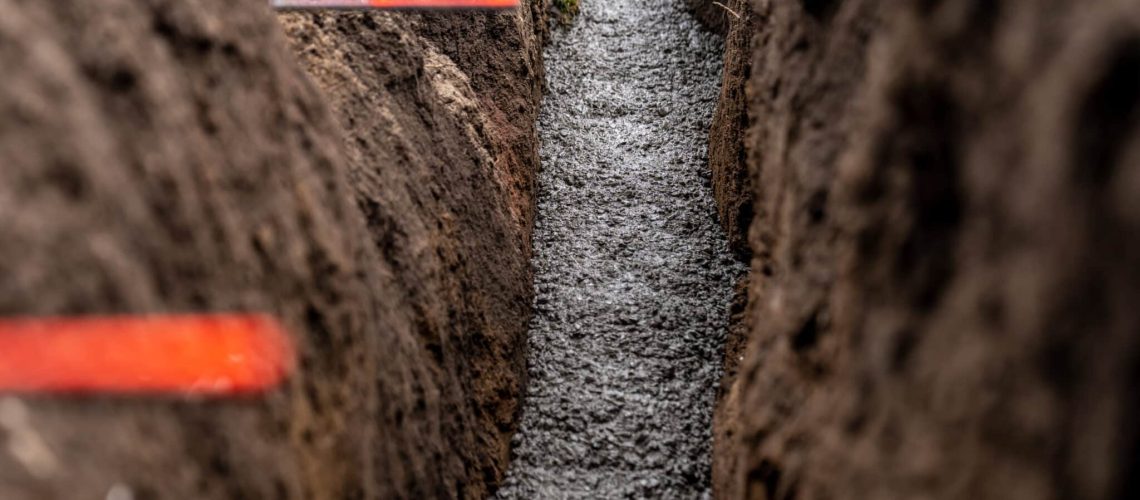A French drain is a simple yet effective solution for managing excess water around your property. Whether you’re dealing with a soggy yard, a flooded basement, or erosion issues, installing a French drain can help alleviate these problems and protect your home’s foundation. In this article, we’ll explore the various benefits of installing a French drain, from preventing water damage to improving your landscape’s drainage. Understanding these benefits can help you make an informed decision about whether a French drain is the right solution for your drainage needs.
Improve Water Damage
French drains are designed to effectively redirect water away from your property, thereby preventing water damage and flooding. These drainage systems consist of a trench filled with gravel or rock and a perforated pipe that allows water to flow through. Here’s how they work:
1. Water Collection: When it rains or when there’s excess water in the soil, the water will naturally flow towards the lowest point. A French drain is installed in a trench dug along this path of water flow, usually sloping away from the property.
2. Perforated Pipe: A perforated pipe is placed at the bottom of the trench. This pipe is covered with a layer of gravel or rock, which acts as a filter to prevent dirt and debris from clogging the pipe. The pipe allows water to enter and flow along its length.
3. Gravity Drainage: The design of the French drain relies on gravity to move the water away from the property. As water enters the perforated pipe, it flows downhill towards the designated drainage area.
4. Discharge Point: At the end of the pipe, there is a discharge point where the water can safely exit the drain. This could be a drainage ditch, a storm drain, or another suitable outlet away from the property.
5. Preventing Water Damage: By redirecting water away from the property, French drains help prevent water from accumulating around the foundation, basement, or other vulnerable areas. This reduces the risk of water damage to the property’s structure and interior.
6. Preventing Flooding: French drains also help prevent flooding by managing excess water and guiding it away from areas that are prone to flooding. This can be especially important during heavy rainfall or in areas with poor soil drainage.
Protecting Your Foundation
French drains play a crucial role in preventing water buildup around the foundation, which can lead to cracks and structural damage. Here’s how they help:
1. Water Diversion: French drains are designed to divert water away from the foundation of a building. By intercepting water before it reaches the foundation, French drains help reduce the amount of water that seeps into the soil around the foundation.
2. Pressure Relief: When water accumulates around the foundation, it exerts hydrostatic pressure on the walls. This pressure can cause cracks to form in the foundation over time. French drains help relieve this pressure by redirecting water away from the foundation, reducing the risk of structural damage.
3. Preventing Soil Erosion: Excess water around the foundation can also lead to soil erosion. As the soil erodes, it can create voids around the foundation, compromising its stability. French drains help prevent soil erosion by redirecting water away from the foundation and maintaining the integrity of the surrounding soil.
4. Maintaining Soil Moisture Levels: While French drains help in diverting excess water away from the foundation, they also help in maintaining optimal soil moisture levels. By preventing waterlogging, French drains ensure that the soil around the foundation remains stable and supportive.
5. Preventing Basement Flooding: In addition to protecting the foundation, French drains also help prevent basement flooding. By directing water away from the foundation, French drains reduce the amount of water that seeps into the basement through cracks and openings in the foundation walls.
Enhancing Landscape Drainage
French drains can significantly improve the overall drainage of your yard, leading to a healthier and more visually appealing landscape. Here’s how:
1. Preventing Waterlogging: One of the main benefits of French drains is their ability to prevent waterlogging in your yard. By redirecting excess water away from low-lying or poorly drained areas, French drains help ensure that the soil remains well-drained and aerated, which is essential for the health of plants and grass.
2. Reducing Erosion: Excess water can cause soil erosion, which can lead to the loss of valuable topsoil and damage to your landscaping. French drains help reduce erosion by directing water away from vulnerable areas and preventing runoff from washing away soil.
3. Minimizing Standing Water: Standing water not only poses a drowning hazard for plants but also creates a breeding ground for mosquitoes and other pests. French drains help minimize standing water by channeling it away from your yard, creating a safer and more pleasant outdoor environment.
4. Preserving Landscaping Features: French drains can be installed around landscaping features such as gardens, flower beds, and trees to protect them from water damage. By keeping these areas well-drained, French drains help preserve the health and beauty of your landscaping.
5. Improving Visual Appeal: A yard that is prone to waterlogging or erosion can detract from its overall visual appeal. By improving drainage, French drains help keep your yard looking neat, tidy, and well-maintained, enhancing the overall aesthetics of your outdoor space.


